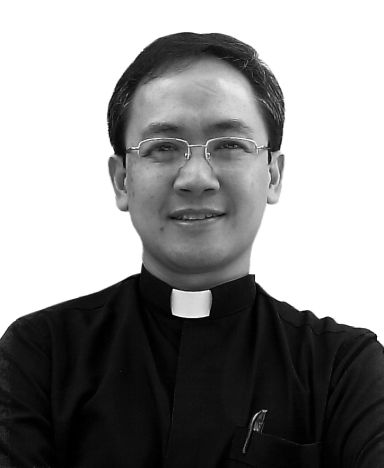
Ongkingco
It is quite common for people to slow down when they catch their own reflections. One doesn’t seem to waste the opportunity, regardless of what reflecting medium they may be in front of, to check if his hair is still presentable or if the color combinations of one’s dress is indeed a gorgeous match from head to heel.
In the cosmetic-conscious cosmos we live in, we witness how frequent this phenomenon of reflective consciousness is becoming. After all, who doesn’t want to gain what cosmetic technology has to offer: be more beautiful, attractive, younger, whiter and thinner!
And yet, all of these are only superficial perks. No matter what one does, such topical modifications are only for others to see but contributes little (if not nothing at all) for the person’s authentic transformation. In time, these material layers will succumb to the inevitable truth of worldly things, that nothing is permanent.
Romano Guardini says: “The visible features which make up the face of man are but the outward layer of the real face. Beneath these features are the inner form, the character, the informing spirit, and the indwelling soul. Often enough the face of man is but a mask” (The Art of Praying: The Principles and Methods of Christian Prayer).
Now, man’s face was fashioned not on earthly things but on a divine Image. Guardini reflects thus: “Man is made in the image of God — the whole man, not only his soul. Everything, therefore, every feature and attribute which is part of the wholeness of man is a manifestation of God” (Ibid).
Sadly, we literally lose face when we ruin our gifted image by the spiritually deforming and physically debasing effects of sin. A first step in regaining our true face is to return to the original image, Jesus Christ. By facing Him again, we gradually find ourselves towards a deeper conversion: our superficial lift, a spiritual conversion that is achieved in and through prayer.
The prayer we are referring to isn’t the mere routine of uttering words and formulas. Rather, it can be compared to thirst or longing. For example, in Psalm 26, the psalmist begs: “My heart hath said to Thee: my face hath sought Thee. Thy face, O Lord, will I still seek.”
This prayer is a deep desire and not merely a petition for some material possession or solution. It seeks to sincerely encounter someone, because that Other will help me to see myself better like no one else. My dialogue with Him will reveal to me my face or who I truly am.
God, through prayer, will give one back his true face. And upon receiving it, he will no longer be led astray by the false images that worldliness tempts him to put on.
“Before God’s face man receives his own true countenance. … The face which matters before the sight of God, man does not possess in his own right; it is given to him by God. Only in speaking to Him do I become that self which He meant me to grow into when He created and redeemed me. Only in prayer does my real face unfold and assume its own true features” (Ibid).
With these encouraging words of Guardini, may we not delay to go to prayer with confidence. It is through prayer that like our Mother Mary, in the Annunciation, that God’s Word becomes flesh and assumes the Holy Face of Jesus.